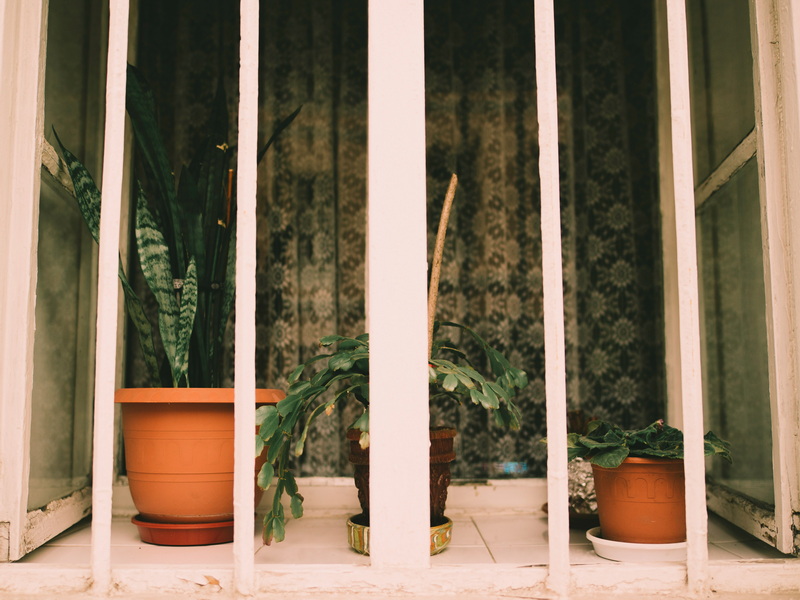English 




Views: 222 Author: Astin Publish Time: 2025-02-26 Origin: Site



Content Menu
● Introduction to Replacing Window Glass
● Step-by-Step Guide to Replacing Window Glass
>> Step 1: Remove the Old Glass
>> Step 2: Remove Glazing Beads
>> Step 3: Clean and Prepare the Frame
>> Step 4: Install the New Glass
● Preventing Future Glass Breakage
● Additional Tips for Effective Replacement
● Choosing the Right Type of Glass
>> 1. What type of glass should I use for replacement?
>> 2. Can I replace just one pane in a dual-pane window?
>> 3. How do I ensure my new glass fits perfectly?
>> 4. What if I break my replacement glass during installation?
>> 5. Is it necessary to use sealant around my new window?
Replacing window glass in an aluminum frame can seem daunting, but with the right tools and guidance, it can be a straightforward DIY project. Aluminum frames are popular for their durability, lightweight nature, and resistance to rust, making them a common choice in Australian homes. However, they can still suffer from damage, such as broken or cracked glass. Knowing how to replace the glass will not only enhance the appearance of your home but also improve energy efficiency.

Before starting the replacement process, it's essential to understand the basics of aluminum frames and the tools required for the job. Aluminum frames are often used in modern architecture due to their sleek design and ability to support large panes of glass. They are generally low-maintenance and can withstand various weather conditions. However, over time, factors such as extreme temperatures, impacts from debris, or even age can lead to glass breakage.
To replace window glass in an aluminum frame, you will need the following tools and materials:
- Heavy-duty gloves: To protect your hands from sharp glass shards.
- Safety goggles: To protect your eyes from debris.
- Utility knife or putty knife: For removing old glass and sealants.
- Rubber mallet: For gently tapping the frame into place.
- Replacement glass pane: Accurately measured to fit the frame.
- Glazing putty or silicone sealant: For securing the new glass.
- Screwdriver: For removing screws that hold the frame in place.
- Cleaning cloths: For cleaning the frame and removing debris.
- Measuring tape: To ensure accurate measurements of the glass.
- Caulking gun: If using silicone sealant.
Safely remove the damaged glass from the window frame. Use a thin putty knife, utility blade, or utility knife to carefully cut along all four sides of the glass. Be cautious not to crack the glass during this process. Once the seal is cut, move to the outside of the window to gently pop the glass tops off.
The glazing beads or glass stops need to be removed. Employ a 501 tool, metal scraper, or flathead screwdriver to carefully detach all four stops. It's essential to remember to remove the top stop last to prevent the glass from falling out. If necessary, use a suction cup or hold the glass by hand while gently prying it out of the frame.
With the old glass and glazing beads removed, the frame should be cleaned thoroughly. Use a 501 tool, chisel, or flathead screwdriver to remove any old sealant or debris. After cleaning, apply new double-sided tape or clear silicone to the frame. Peel the corners of the double-sided tape and fold them inwards for easy removal after the glass is set.
Place the bottom of the new glass on setting blocks and center it in the frame. If working alone, consider using a top piece of stop to hold the glass in place. On the inside, peel the tape or have someone assist you while setting the glass in place. Gently push on the glass to ensure a proper seal to the frame.
Reinstall the glass stops by pushing and snapping them into place. If needed, use a wood block or plastic material to tap them in without scratching the glass. Repeat this process for all four sides. Once the stops are securely in place, clean the glass, and your window replacement job is complete.

Safety should always be a top priority when replacing window glass. Here are some key safety measures to consider:
- Personal Protective Equipment (PPE): Wear heavy-duty gloves, safety goggles, and sturdy footwear to protect yourself from sharp edges and falling debris.
- Safe Handling of Glass: Always handle glass carefully, and use a vacuum to collect small pieces of broken glass. Never use your bare hands.
- Working at Heights: If the window is located at a height, use a stable ladder or scaffolding. Ensure it is set up on even ground and follow the manufacturer's instructions regarding weight limits and proper usage.
- Proper Use of Tools: Use tools for their intended purpose and follow the manufacturer's instructions.
To prevent future glass breakage, consider applying a protective film to the glass. This can help absorb impacts from debris and reduce the likelihood of cracks. Additionally, regular maintenance, such as cleaning the frame and checking for loose glazing beads, can extend the life of your aluminum windows.
- Test for Leaks: After installing the new glass, check for any air leaks by holding a lit candle near the edges of the window. If the flame flickers, it indicates an air leak.
- Use High-Quality Sealants: Ensure that the sealant used is of high quality and suitable for outdoor conditions to prevent water intrusion.
- Consider Professional Help: If you are unsure about any part of the process, consider hiring a professional to ensure the job is done correctly.
When selecting replacement glass, consider factors such as energy efficiency, noise reduction, and UV protection. For example, low-E glass can help reduce heat transfer and improve energy efficiency, while laminated glass provides enhanced safety by holding together when broken.
Replacing window glass in an aluminum frame can be a manageable DIY project with the right tools and precautions. By following the steps outlined and taking necessary safety measures, you can successfully replace broken glass and enhance the appearance and functionality of your windows. If you are unsure or uncomfortable with the process, it is always advisable to seek professional assistance.

The type of glass you should use depends on your specific needs, such as energy efficiency or noise reduction. Ensure the glass thickness matches the original to fit properly.
Yes, you can replace just one pane in a dual-pane window, but it may require specialized tools and techniques to ensure a proper seal.
Measure the frame accurately, including the thickness of the glass, to ensure a precise fit. Use a measuring tape to confirm the dimensions before ordering the replacement glass.
If you break the glass during installation, carefully remove all shards and start over. Ensure the area is clean and free of debris before proceeding.
Yes, using sealant around the new window is crucial for creating a tight seal and preventing leaks. Silicone sealant is recommended for its durability and waterproof properties.
[1] https://www.jrcglasssolutions.com/blog/a-step-by-step-guide-to-replacing-glass-in-a-window
[2] https://www.weiye-aluminium.com/how-to-replace-window-glass-in-aluminum-frame.html
[3] https://www.windowanddoorshop.com/safety-measures-to-consider-during-window-replacement/
[4] https://magicglass.com.au/blogs/glass-blog-glazing-glass-projects-rope-access-news/replace-glass-in-aluminium-window
[5] https://www.youtube.com/watch?v=WmxbM_iYqR4
[6] https://azwindowcompany.com/the-safety-aspects-of-glass-replacement-ensuring-proper-installation/
[7] https://windowhardwaredirect.com/blogs/news/step-by-step-guide-how-to-replace-a-broken-window-pane-in-aluminum-frame
[8] https://www.reddit.com/r/howto/comments/ut55v6/how_to_replace_broken_glass_in_these_aluminum/
Top Aluminum Furnitures Manufacturers and Suppliers in Czech Republic
Top Aluminum Furnitures Manufacturers and Suppliers in Poland
Top Aluminum Furnitures Manufacturers and Suppliers in Belgium
Top Aluminum Furnitures Manufacturers and Suppliers in Finland
Top Aluminum Furnitures Manufacturers and Suppliers in Denmark
Top Aluminum Furnitures Manufacturers and Suppliers in Greece
Top Aluminum Furnitures Manufacturers and Suppliers in Portugal
Top Aluminum Furnitures Manufacturers and Suppliers in Austria
Top Aluminum Furnitures Manufacturers and Suppliers in Norway
Top Aluminum Furnitures Manufacturers and Suppliers in Sweden
